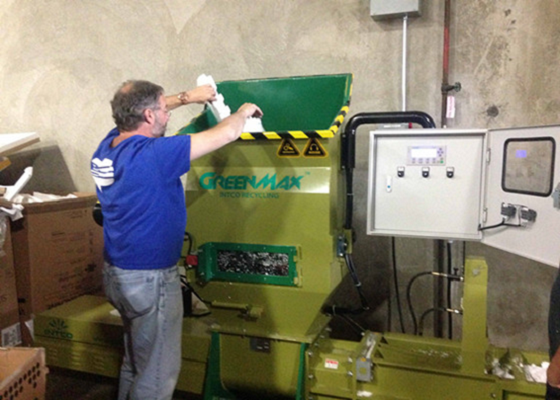A team of scientists at Virginia Technology working with one associate from Dongbei University of Financing and Business economics as well as an additional from Santa Clara University has created a procedure for recycling polystyrene that involves the capture of useful products. In their paper released in Proceedings of the National Academy of Sciences, the group defines their procedure as well as just how it could be used in massive applications.
As the researchers keep in mind, thousands of numerous lots of plastics are created worldwide every year as well as approximately 40% of them are temporary usage, which implies they wind up in land fills as opposed to being reused. In this new effort, the researchers have taken a various strategy. Instead of trying to refine one kind of plastic– polystyrene– to ensure that it can be used again, they have treated it to enable the removal of its beneficial materials for use in other applications.
Polystyrene is made from monomers of fragrant hydrocarbon styrene. The plastic in its a lot of fundamental kind is hard, clear and weak. It is used to make a wide array of items, the majority of commonly Styrofoam packaging and containers.
The work included using chain reactions to remove helpful or valuable products from a polystyrene sample. The procedure they created involves low-cost chemicals along with ultraviolet light irradiation. The scientists additionally keep in mind that their procedure decreased the plastic to its aromatic elements. After that, by including certain solvents, they could draw out a wanted product, such as diphenylmethane, which is far more important than the plastic from which it came. The scientists note that their procedure also generates a kind of raw gasoline as well as asphalt as byproducts.
The researchers tested their process on examples of polystyrene accumulated from a local land fill and also found it functioned as wanted. They suggest their process is conveniently scalable as well as even went so far regarding determine the expense of constructing a plant efficient in generating products such as 4-oxo-4-phenyl-butyric acid, 1,2-diphenylmethane, benzophenone, in addition to diphenylmethane–$1.28 million. They wrap up that their decomposition as well as upcycling technique is feasible; not just would it decrease the quantity of plastic accumulating around the globe, it would offer a financial motivation to do so.
